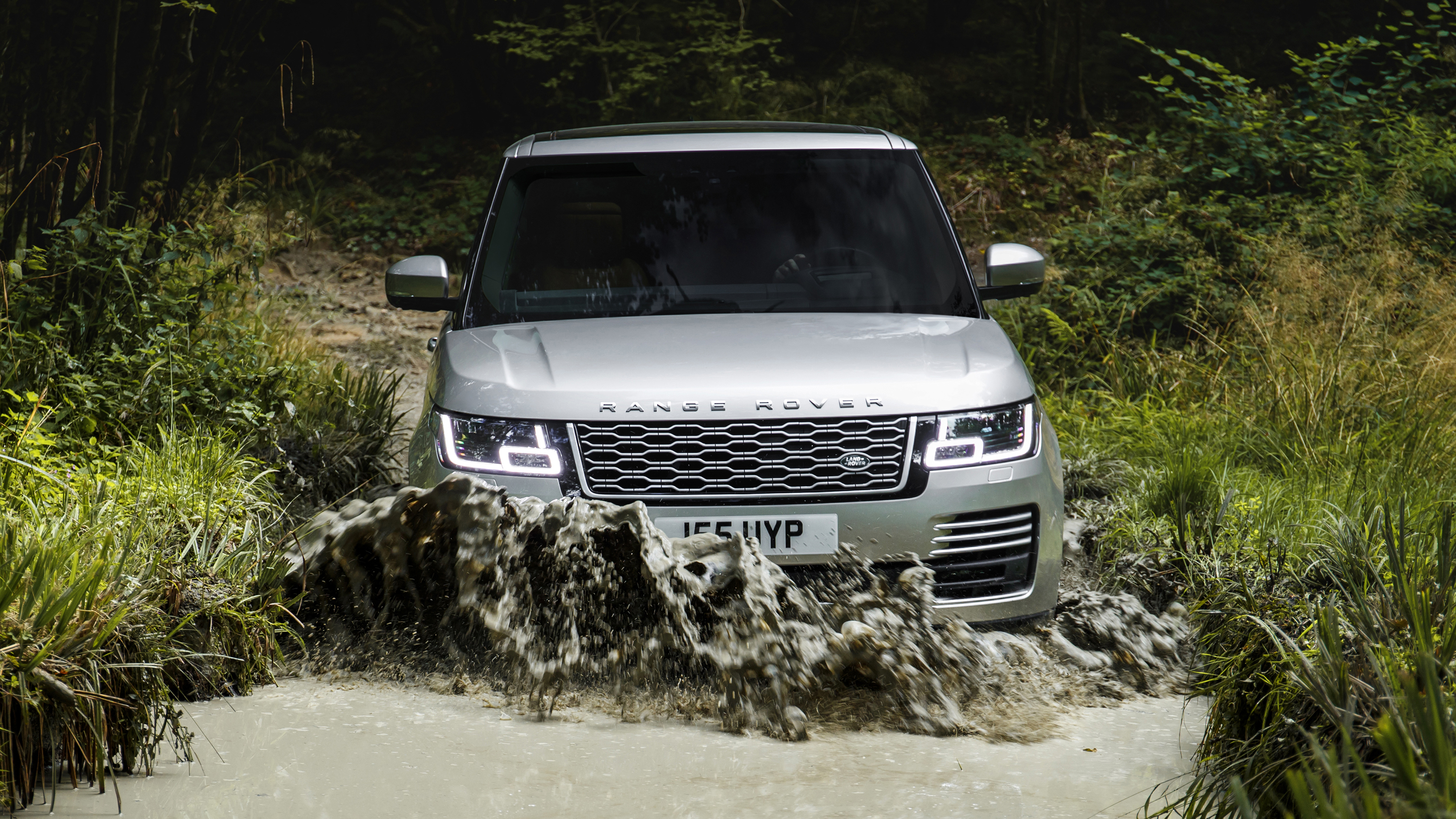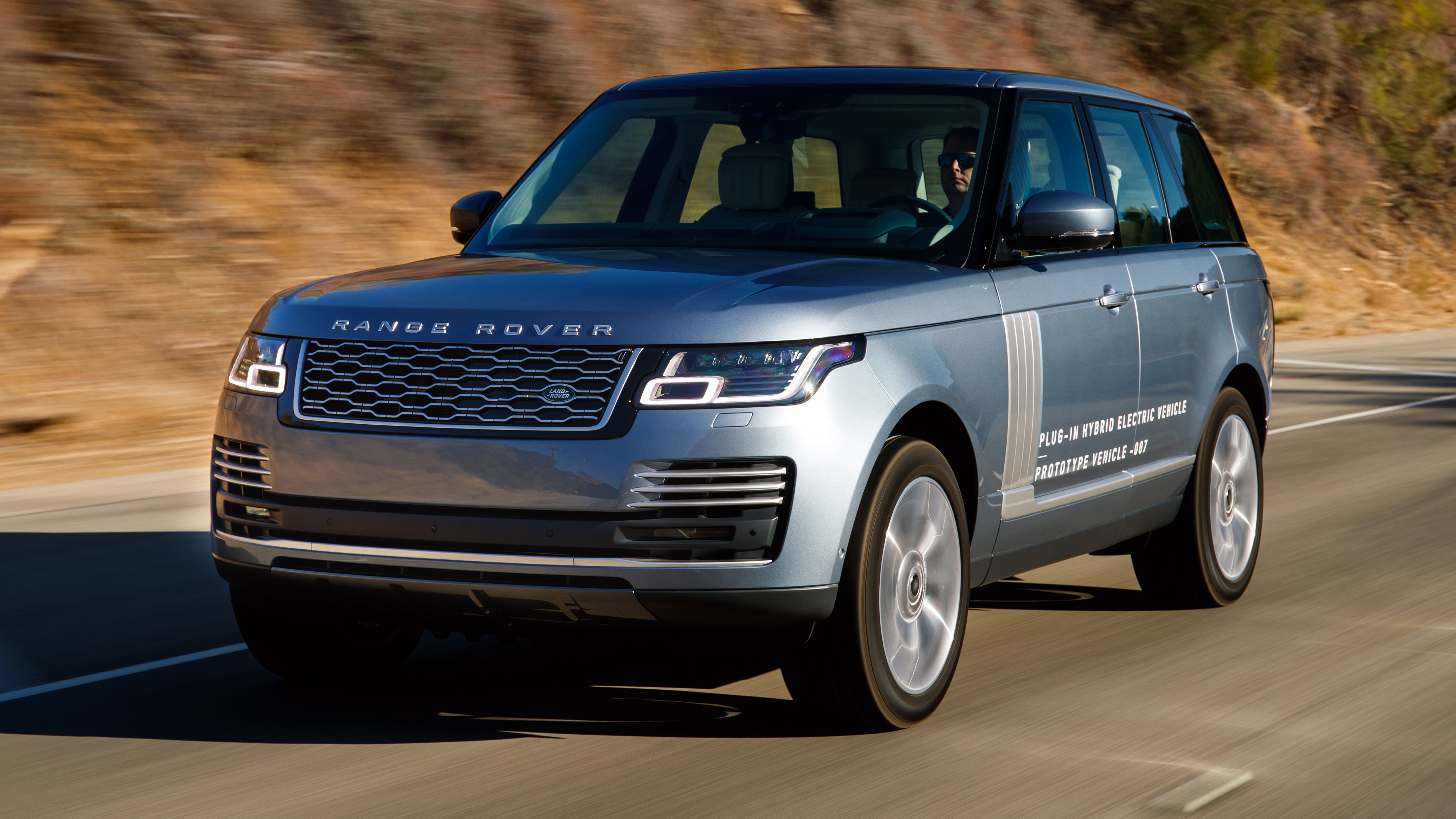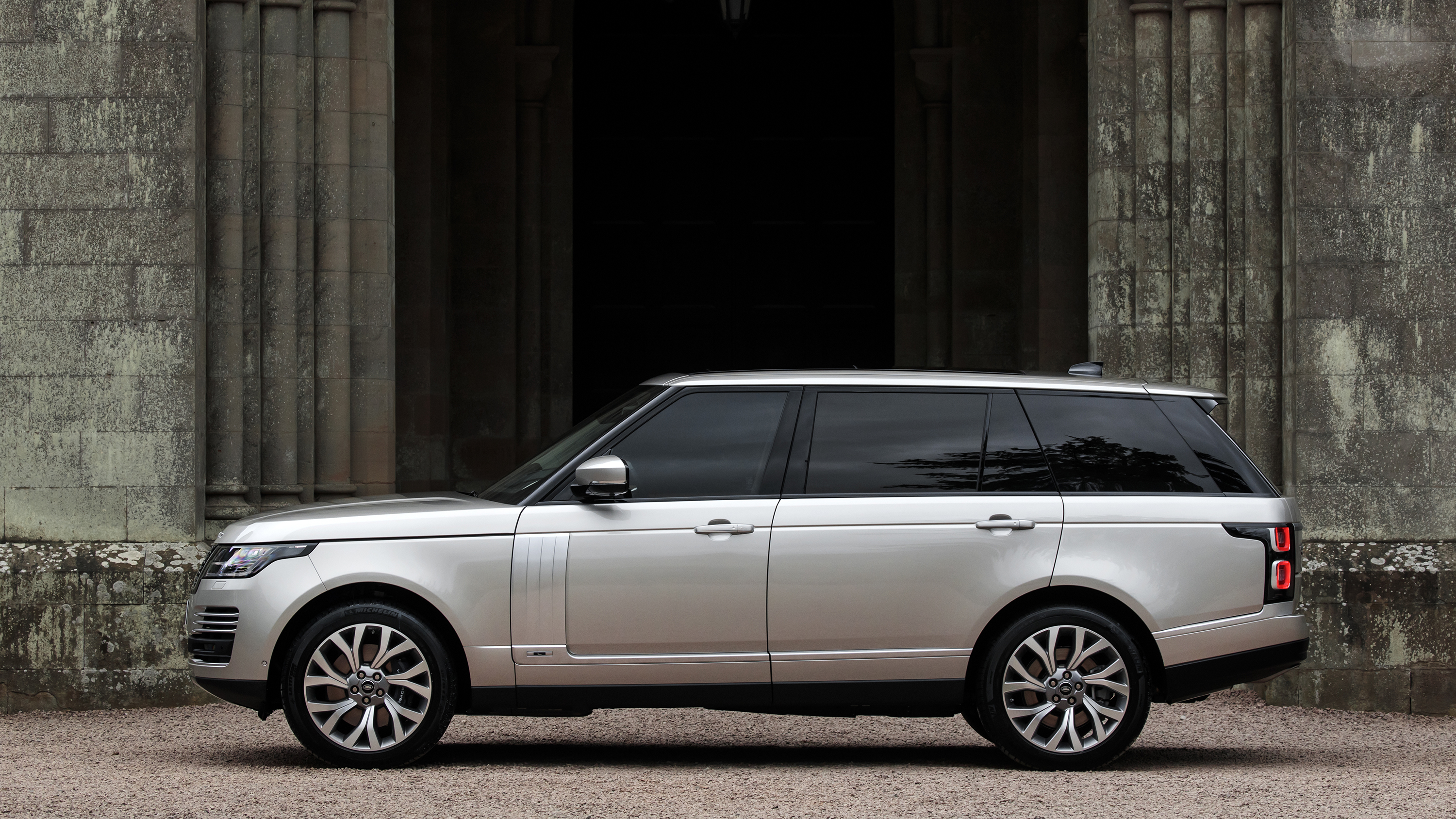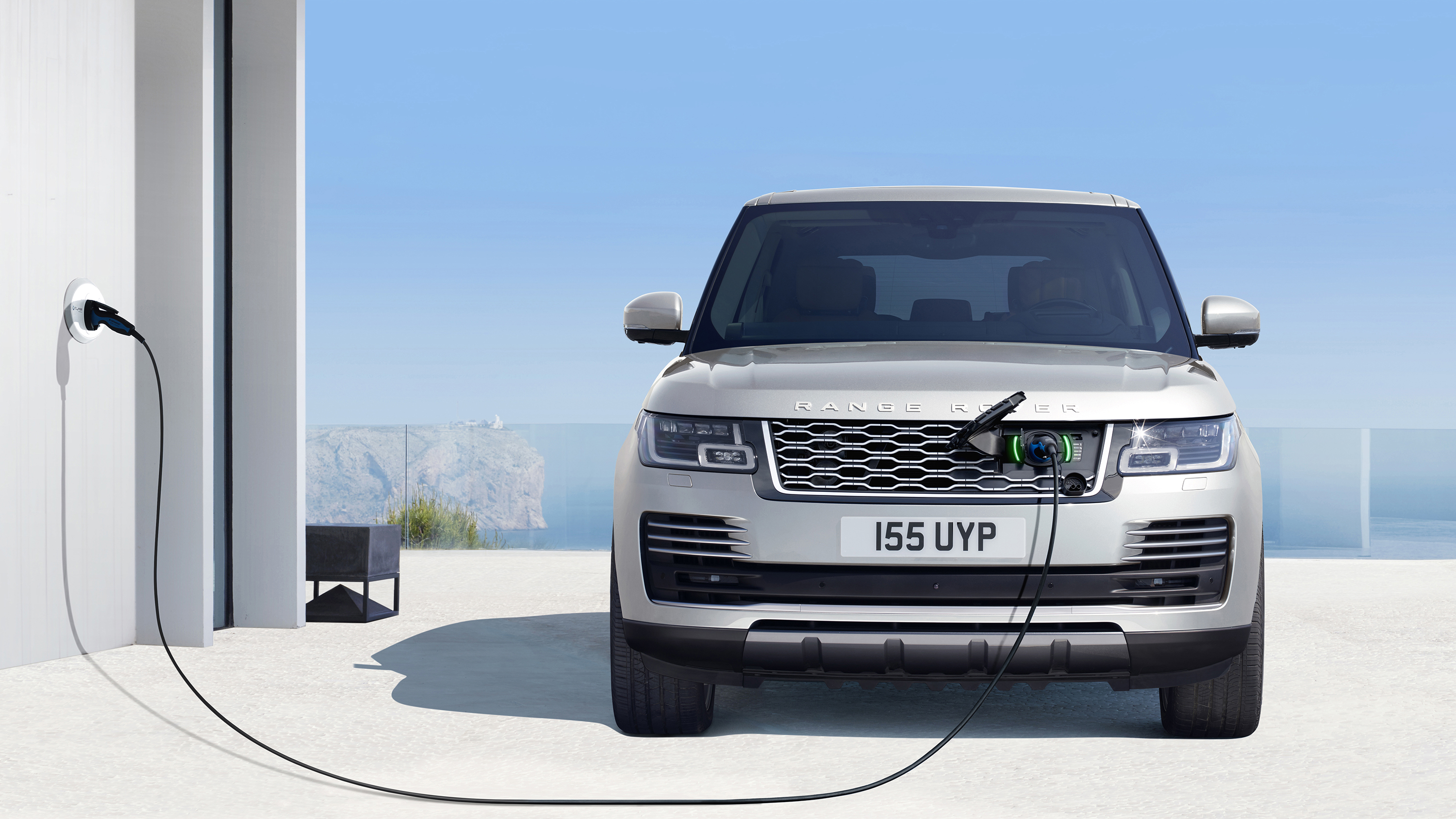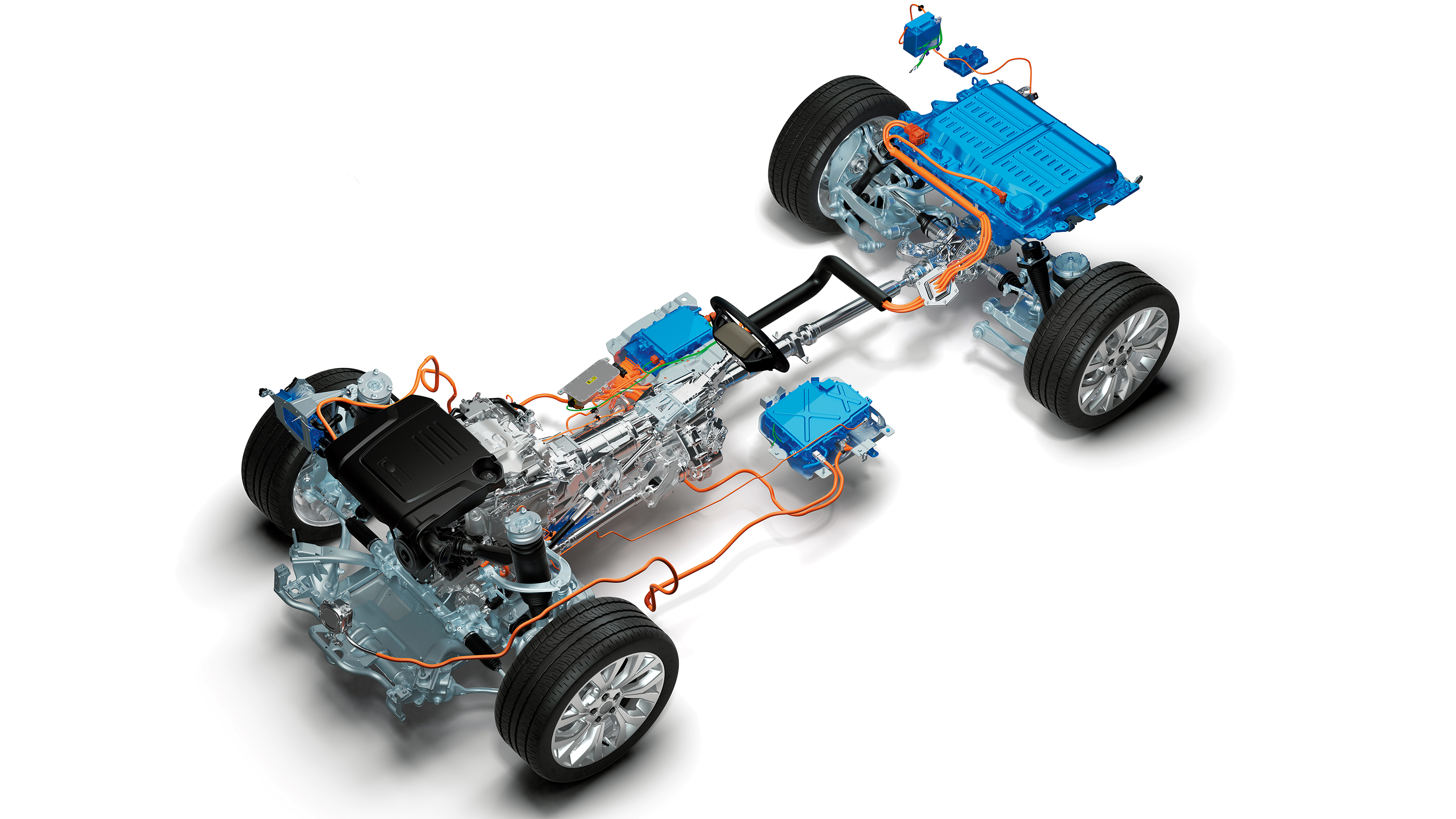
SPEC HIGHLIGHTS
- Battery
Capacity13.1kWh
- BHP
404bhp
- 0-62
6.8s
- CO2
75g/km
- Max Speed
137Mph
- Insurance
group50E
It’s doesn’t look that different, what’s all the fuss about?
While the shape is a familiar staple of the luxury segment, this 2018 Range Rover has undergone substantial fettling in all areas.
Since the arrival of the Bentley Bentayga, which redefined the parameters of taste, opulence and budget in the Range Rover’s heartland market, it was vital that Land Rover’s core product upped its game.
OK, so what’s new?
Changes on the exterior are subtle, but then why mess with a design that, while arguably more at home at a Hollywood premiere than a muddy field, has made the Range Rover one of the best-selling luxury SUVs in the world?
Look closer and the devil is in the detail. At the front there’s a new grill and bumper, with larger vent blades. At the side the lower accents and vents have been reworked, while at the rear the updated bumper features integrated tailpipes across all derivatives.
The biggest exterior difference, and the easiest way to tell which generation of Range Rover is trying to barge you out of the fast lane, is the headlight technology which now comes in four options: Premium, Matrix, Pixel and Pixel Laser.
The latter is top spec, featuring 142 individual LEDs combined with four high beam lasers that can throw light 500m down the road. Oh, and for the first time there’s an emissions-busting plug-in hybrid version - starting at £86,965, or £105,795 for the Autobiography model driven here.
What about inside?
Luxury and connectivity have taken a big step up. In the front, the new seats are wider, softer, adjustable 24 ways via controls on the door panel and feature a hot stone massage function to sooth the stresses of the day.
Top Gear
Newsletter
Thank you for subscribing to our newsletter. Look out for your regular round-up of news, reviews and offers in your inbox.
Get all the latest news, reviews and exclusives, direct to your inbox.
In the back, both rear executive seats can now be reclined to 40 degrees, feature massage functions and are divided by a powered and heated rear centre console, which folds down at the touch of a button to form a useful drinks holder and storage space/barrier between fighting children.
Want to transport three people in the rear? Then simply fold it up and choose whoever you like the least to sit in the middle. The boot remains large, but with the batteries located beneath, it sits 45mm higher than on a standard Range Rover. Good news for shorter dogs who will now be afforded a greater view.
What about the tech?
The new Range Rover features the latest iteration of Land Rover’s media system, as seen in the Velar. It gives you two 10-inch touchscreens that you can configure to control nav, media, air con and terrain response functions. It’s all beautifully designed, relatively easy to navigate and functional… if a bit slow to process.
But you can impress your friends by swiping content from one screen to another. Gesture control also allows you to retract the panoramic sunroof’s sunblind with a flick of your hand. Just be careful where you do this, as it could be interpreted as rather dismissive to other road users…
The dash features a further 12-inch screen configurable in several different ways. It also shows the state of charge of the battery (in the form of a graphic of the car) on entry and exiting the vehicle. Not that you’ll spend much time looking at it when the 10-inch head up display shows your speed, navigation directions and a host of other information.
It all sounds difficult to juggle…
You’ll be pleased to know Range Rover has partnered with Nuance, the voice recognition specialists, and many of the functions can also be controlled via voice command. The whole system is powered by a solid-state hard drive to aid processing speed.
With connectivity at the core of any modern luxury vehicle’s offering, it’s no surprise that the car is littered with charging points (17 in total) including USB, HDMI and 12V domestic plug sockets, plus there’s the capacity for up to eight 4G Wi-Fi connections. Enough to keep you abreast of the post-Brexit crash, or in happier times keep the kids quiet while you discuss which assets to liquidate to afford your monthly PCP payments.
Right, what about that PHEV bit?
While the new Range Rover will be available with a range of familiar engine options from 3.0-litre diesel V6s to a 5.0-litre 565bhp V8 petrol, this is the first time the range has included a plug-in hybrid.
As we know, they do wonderful things for reducing a brand’s carbon footprint and come with significant advantages for buyers in the form of tax breaks and access to zero emissions zones in major cities.
Give me the science.
The P400e combines a 296bhp 2.0-litre 4cyl petrol engine (as used across a number of different applications in the JLR group, including the F-Type) combined with a 114bhp electric motor, which is housed in the eight speed ZF transmission, for a total of 398bhp and 472lb ft of torque.
That means 0-60mph in 6.4 seconds and a top speed of 137mph, or to put it another way, almost exactly the same figures as the popular, lighter (by about 250kg) similarly priced V8 diesel derivative.
Where the official figures differ dramatically is in the quoted fuel consumption and CO2 emissions: the V8 diesel officially returns 33.6mpg and 219g/km of CO2, whereas the P400e claims 101mpg and 64g/km in the NEDC.
The 13.1kWh lithium-ion battery is mounted beneath the boot to help balance weight distribution, while the charging cable plugs into the front of the car under a panel integrated into the grille.
On a 10amp plug it takes 7hrs 30mins to fully charge (this reduces to two hours 45minutes on faster charger, but most people will charge overnight). Fully charged the P400e will give you a claimed range in EV-only mode of 31 miles.
You can also opt for Predictive Energy Optimisation, which utilises GPS data combined with your navigation input to maximise the fuel economy. Alternatively hit the ‘Save’ function to hold the battery at a pre-selected charge level, so you can stealthily glide the last few miles to your destination.
How does it drive?
We tested the prototype P400E in Los Angeles and started our journey with 88 per cent battery capacity. Leaving the downtown area in EV mode, the Rangey slipped silently between the skyscrapers, the instant torque of the electric motor keeping us effortlessly at urban traffic speeds.
It’s in this environment that the PHEV makes most sense - why have an engine running in the constant start-stop of the daily commute? EV mode took us out of the city and as we headed to the freeway we allowed the P400e to bring the 2.0-litre engine into play.
At lower engine loads it hides in the background and gets on with the job without disturbing the serenity. But demand more of it –accelerate hard onto a motorway or clog it from a set of lights – and it becomes more noticeable. At times it’s clearly having to work hard to shift the mass of the P400e and as the revs rise it’s somewhat at odds with the rest of the refined luxury experience. It’s still officially at prototype stage with a bit of work to be done, mind.
Once the initial hard work is done and you’ve reached cruising speed, the engine fades back into the background and civility is restored. However, beyond how hard the engine occasionally has to work, the P400e does a good job of hiding its extra mass and doesn’t roll or wallow in the corners any more than previous petrol or diesel versions.
Does it work off road?
Short answer, yes. Despite its extra weight, it’s arguably more capable off road than its internal combustion relatives. The control and instant delivery of maximum torque that an electric motor offers is a real help for low speed pullaways on low-grip surfaces.
Combine that with Land Rover’s usual suite of mountain-conquering terrain response capabilities and the PHEV is happy to tackle any surface you care to throw at it. Oh, and despite fears about combining water and high voltage electricity, the P400e will wade through rivers as happily as the rest of the range.
What’s the verdict, then?
The fact that Land Rover chose to showcase its new and improved Range Rover by giving us access to the PHEV version first shows the importance of this drivetrain in a more sustainable future for the brand.
While the improvements to the exterior are slight, the shift-change in quality, functionality and connectivity of the interior is a bigger, and much needed, leap forward. If you can put up with some less refined engine noise when you’re pushing it, then for many the PHEV will make financial sense, and with performance figures to match the V8 diesel, it makes a strong case for itself. We’ll be driving the rest of the updated range next March.
Featured

Trending this week
- Car Review
BMW 1 Series
- Top Gear's Top 9
Nine dreadful bits of 'homeware' made by carmakers




